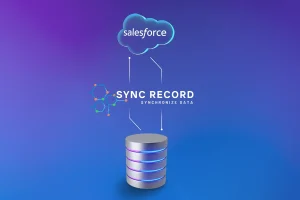Large organizations typically work with many different software applications. These must work together seamlessly and be manageable. But how do you ensure that all applications, developed by multiple software developers, are developed in a way that ensures quality, interoperability and manageability? Then you choose a standardized way of working. Read how the British government did this for their preferred programming language Ruby and associated framework Ruby on Rails.
What is Ruby on Rails?
At musQueteer, we work (in addition to JavaScript and Salesforce AppExchange) exclusively with Ruby as a programming language. Ruby on Rails, also known as Rails, is an open-source web application framework written in Ruby. It is designed to help developers build Web applications with a strong emphasis on simplicity, readability and productivity.
Rails provides a standardized development structure known as the “Convention over Configuration” principle. This means our developers can focus on building the specific functions of their application and develop the logic in Ruby on Rails’ code, while Rails implements the conventions and best practices for tasks such as database configuration, routing and actual code generation. This ultimately delivers shorter development time and higher productivity.
Standardizing Rails for UK Government
This is exactly why the British government chooses Rails as the development standard for the lion’s share of their software applications. Not only that, choosing an international standard makes developing with different parties unambiguous and clear. They even provide a comprehensive overview on their website GOV.UK of how they want outside parties to program for them. This will cover the following topics and best practices for software architecture and web architecture:
- Tooling
- Configuration
- Organizing code
- Documenting decisions
- Test Strategies
If you want to learn more about these topics, check out the UK government’s website, where they share their conventions: https://docs.publishing.service.gov.uk/manual/conventions-for-rails-applications.html
Guarantee your continuity and avoid vendor lock-in
Especially when you work with multiple software developers, standardizing the way you work is an important step in ensuring the quality of your Rails applications. You ensure that applications always work together optimally. But perhaps more importantly, you make sure that there is always a Ruby on Rails developer who can fairly easily take over management of the application, should the original developer fall over or stop performing as desired.
Standard operating procedure gives peace of mind
For our clients, if required, we also define a standard operating procedure, with corresponding regulations and methodologies for a solid architecture and sound development standard. If you find this interesting and are curious what this could mean for your organization, feel free to contact us! We are happy to help.

Ask our specialists
Want to learn more about Ruby on Rails for your organization? If so, please feel free to contact Arnd Jan Prause, Founder and Consultant at musQueteer


